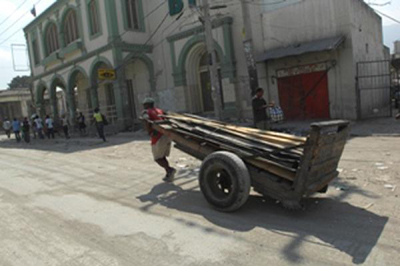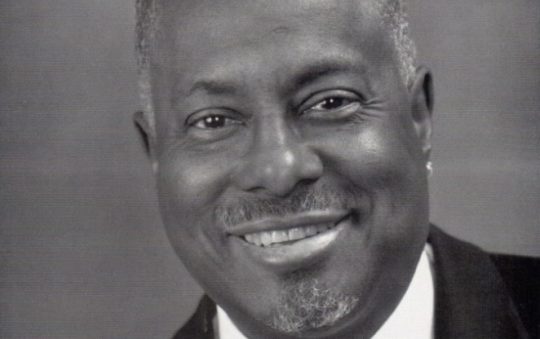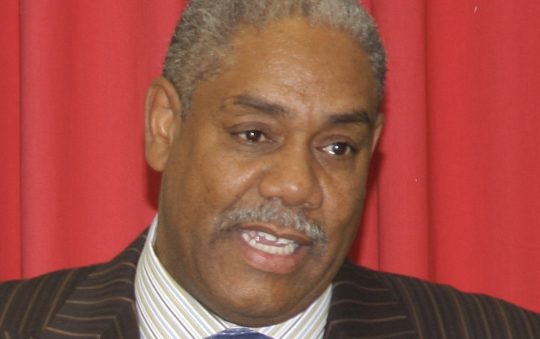
Life in Haiti is a Real Struggle
PHOTO CREDIT-RICHARD MUHAMMAD
Haiti Rebounds Even as Needs Grows for Rainy Season
By Herb Boyd
NNPA Special Correspondent
PORT-AU-PRINCE, Haiti-Hurricane-ravaged Port-au-Prince continues to rebound even as the rainy season earnestly approaches the Island of Haiti.
This week, U. S. officials are scurrying to deliver portable toilets, hurricane-resistant tents, and plastic tarps, which Haitian Tourism Minister Patrick Delatour has said he prefers for the coming torrential rains, possible hurricanes and mudslides. Already eight people were killed over the weekend in flooding after a downpour–and the rainy season has not fully started in earnest.
Weather is key in Haiti right now as the rainy season is set to start in early April and last for several months. The forecast for this week fluctuated between sunny to partly cloudy; then more downpours at the end of this week. Temperatures are fluctuating between the mid 70s at night and into the 90 during the day hours.
Racing the rains, former President Bill Clinton, the United Nations Special Envoy for Haiti, on Monday convened a teleconference with United Nations officials involved in leading the emergency and humanitarian response in Haiti. According to a release that followed the conference, they assessed the relief operations, highlighted unmet needs–particularly in areas outside of Port-au-Prince and in advance of the rainy season–and encourage closer coordination with the Government of Haiti and with each other.
It’s not just the weather, but conditions potentially caused by the weather that’s concerning the citizens and relief workers. Those conditions could mean the spread of disease, human waste and even human bodies, many of which did not receive proper burial in the initial aftermath of the earthquake. Nearly 200,000 were killed.
Meanwhile, life in the capitol continues to struggle for normalcy.
After you get beyond the fact that Haiti, particularly Port-au-Prince, is a modern day ruin-which is not easy when around each new corner is a more devastating scene-there is the amazing vitality, ingenuity and creativity of the Haitian people.
This ability, this undying resilience, was evident from one end of the city to another during a whirlwind visit to the city by a team of Black journalists in mid February. Here and there were welders, their torches melding torn metal; masons mending broken walls; carpenters repairing doors and roof tops; painters putting a fresh gloss on ravaged buildings; and the countless vendors setting up shop in front of totally damaged structures.
And exactly one month after the catastrophe, the spirit of recovery was seen in the hundreds of people walking along the streets and roads, many of them dressed in white, on their way to various sites of mourning, ready to remember the dead and dying as they celebrate another day of living.
“We are determined to put our homes and our lives back together,” said a young man, who stood with his mother and father outside a tent where bricks provided a makeshift foundation. “Our home was completely destroyed, so this will have to do until we can do better.”
Even for this reporter, who visited Mississippi and Louisiana after Hurricane Katrina and stood as an eyewitness to the collapse of the World Trade Center, spending four days traveling with a delegation of African-American media representatives amid the rubble of Port-au-Prince and the surrounding neighborhoods is to experience a tragedy of almost incomparable proportions.
It was mindboggling to see the President’s Palace, an architectural wonder, its twin domes crushing the floors below; the beautiful National Cathedral where President Rene Preval was inaugurated in 2006 with only the historic statues as a reminder of its splendor; and all of the city’s municipal buildings in silent piles of dusty cement with rods of steel protruding like rusty fingers.
Immediately the question becomes why some buildings remain standing while others crumbled in the 7.0 magnitude earthquake? “Many of the buildings that collapsed were built without consideration of the building codes,” said Delatour, Haiti’s Minister of Tourism, a trained architect who studied at Howard University and is leading the recovery effort.
Fortunately, thousands of lives were spared because people weren’t at home and asleep when the earthquake rattled the land at 4:53p.m. on January 12.
One concern for Haitian construction companies is how to build a home or an office building capable of withstanding an earthquake and, at the same time, hurricanes, which most of the current buildings that fell were constructed to endure.
It will take several years and $3 billion to complete the recovery, Delatour speculated, “Though it could be much more because it’s hard to factor in everything at the moment,” he added.
Meanwhile, it is estimated that some three million Haitians are homeless or dwelling in tents and other makeshift quarters, often waiting desperately for decent shelter, food, and medical attention.
Nothing was more depressing than to see the long line of injured people outside one of the city’s few functioning hospitals, where emergency rescue units have set up tents to provide additional space for the injured.
“We can handle maybe 500 patients a day here,” said Dr. Alix Lasseque, executive director of the State University Hospital in Port-au-Prince. “But we are terribly understaffed and we can’t perform major surgeries here.”
Food and water distribution remain troubling challenges to the various organizations although it has helped somewhat that women are now given coupons to pick up such foodstuff as 50 pound bags of Haitian rice, which they balance on their heads as if it were a pillow.
At other points, the distribution is not so orderly and the crush of people, a veritable stampede, swarming to catch packages of protein snacks tossed from trucks, present a great danger to the weak, aged and disabled.
When it comes to shelter, the distribution of food and water, and tending to the medical needs of the people, Carlene Dei, head of the USAID mission, said great strides had been made, “but there is still so much more to be done.”
Overall, Dei said, referring to the relationship between her organization and the Haitian government, “We can do better than we’re doing…what’s needed is a whole new paradigm.”
That new paradigm, especially in reference to the rebuilding of Haiti, is something that Delatour has given considerable thought. “You see, I’m an optimist,” he told the African American delegation. “For me the glass is always half full, not half empty.
“The first thing we have to do is to rebuild the waterfront and the city’s infrastructure,” he continued, rising from behind his desk and facing a wall-size map of Port-au-Prince. “Then we can begin to deal with the 17 ministries which have been destroyed. Customs, the churches, the schools all have to be rebuilt. We lost more than 8,000 schools. There is the problem of demolition and what’s to be done with the rubble.”
These are just a few of the problems President Preval has given the energetic minister and he seems more than equal to the task.
Like Delatour, Ron Daniels, who led the delegation, is an optimist, but they will need more than a half-glass outlook to deal with the enormous recovery and rebuilding of Haiti, particularly with the rainy season and hurricanes looming on the horizon.
NNPA News Service Editor-in-Chief Hazel Trice Edney contributed to this story.
Â
Â






